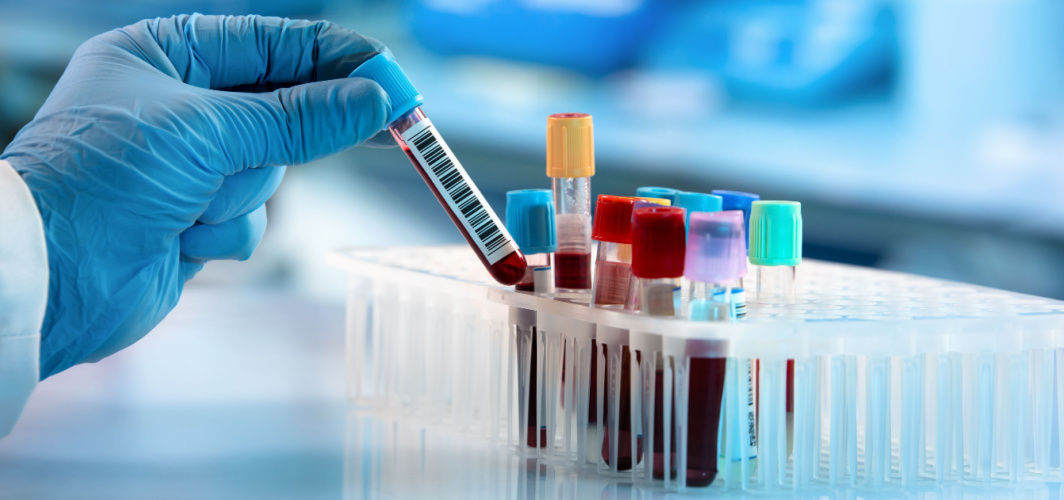General Health
The 7 Most Common Diagnostic Tests
7 min read
By Apollo 24|7, Published on - 09 October 2023
Share this article
0
0 like

Diagnostic tests play a crucial role in healthcare by aiding in the accurate diagnosis of various medical conditions. They help identify diseases at an early stage, allowing for timely intervention and improved outcomes. Diagnostic tests also assist in monitoring the progress of a disease, evaluating the effectiveness of treatment, and detecting any potential complications. In this blog, we will delve into the seven most common diagnostic tests, providing you with a comprehensive understanding of their importance in healthcare and their role in improving medical outcomes.
Common Diagnostic Tests
Diagnostic tests are medical tests performed to identify, confirm, or rule out the presence of a disease or medical condition in a patient. These tests are crucial in helping healthcare professionals make accurate diagnoses and develop appropriate treatment plans. Here are some common diagnostic tests
1. Complete Blood Count (CBC)
The Complete Blood Count (CBC) is one of the most common diagnostic tests performed in healthcare settings. The purpose of a CBC is to analyse the different components of your blood, including red blood cells, white blood cells, and platelets. By examining the levels of these cells, doctors can gain insights into your immune system's function, detect infections or anaemia, and monitor certain medical treatments.
- Procedure: During the procedure, a small sample of blood is drawn from your arm and sent to a laboratory for analysis. The laboratory technicians will examine the sample under a microscope and measure the number, size, and shape of red and white blood cells.
- Results: Once the results are obtained, they are interpreted by medical professionals who compare them to established reference ranges. Abnormal levels may indicate underlying health conditions such as anaemia, infection, or leukaemia.
2. Blood Chemistry Panel
A blood chemistry panel is a diagnostic test that involves analysing various components of your blood to assess organ function and screen for certain medical conditions. By evaluating key components such as glucose, electrolytes, kidney function, liver enzymes, and cholesterol levels, healthcare professionals can gain valuable insights into your overall health.
- Procedure: During a blood chemistry panel, a healthcare professional will insert a needle into one of your veins to collect a small amount of blood. The sample is then sent to a laboratory for analysis. The procedure is relatively quick and simple, and you may experience minor discomfort during the needle insertion.
- Results: The results of a blood chemistry panel can provide important insights into your health. Abnormal results may indicate underlying health conditions such as diabetes, kidney disease, liver dysfunction, and high cholesterol that require further investigation or treatment.
3. Urinalysis
Urinalysis is one of the most common diagnostic tests used to evaluate kidney function, detect urinary tract infections, and identify other conditions. It involves collecting a sample of urine and analysing it for various parameters.
- Procedure: Collecting and analysing urine samples is a straightforward process. A clean catch midstream urine sample is usually preferred to minimise contamination. The sample is then sent to a laboratory for analysis. During the analysis, several parameters are evaluated. This includes checking for the presence of blood, protein, glucose, bacteria, and other substances in the urine.
- Results: The results of a urinalysis can provide valuable insights into kidney health, urinary tract infections, diabetes, dehydration, and other conditions. Abnormal findings may require further investigation or treatment.
4. Imaging Tests: X-Rays and CT Scans
X-ray is one of the types of diagnostic tests which uses small amounts of radiation to capture images of the inside of your body. It is particularly useful for visualising bones, teeth, and chest infections. X-ray helps doctors identify fractures, lung infections, and certain abnormalities in organs.
- Procedure: During the procedure, you will be positioned between an X-ray machine and a detector. The machine will emit a controlled amount of radiation, which will pass through your body and onto the detector.
- Results: Interpreting the results of an X-ray requires the expertise of a radiologist or healthcare professional. They will look for any abnormalities such as fractures, tumours, infections, or other conditions. The results are typically presented as black-and-white images that highlight different densities of tissues.
CT scans, also known as computed tomography scans, provide detailed cross-sectional images of the body. They utilise X-ray technology from multiple angles to create a 3D image. CT scans help diagnose conditions like tumours, internal injuries, blood clots, and infections in organs or tissues.
- Procedure: During a CT scan procedure, the patient lies on a table that moves through a doughnut-shaped machine called a scanner. The scanner emits X-ray beams from different angles, capturing multiple images that are then reconstructed by a computer into detailed 3D images.
- Results: Interpreting the results of a CT scan requires specialised training. Radiologists can identify abnormalities such as tumours, blood clots, infections, or structural abnormalities. These detailed images help in diagnosing and planning treatment for various medical conditions.
However, it's important to note that these tests have certain limitations. For example, X-rays expose patients to a small amount of radiation, so pregnant women should avoid them if possible. Additionally, CT scans involve higher radiation levels than X-rays and should be used judiciously.
5. Electrocardiogram (ECG or EKG)
The electrocardiogram, commonly known as ECG or EKG, is a non-invasive type of diagnostic test that evaluates the electrical activity of the heart. It is used to assess heart function and detect abnormalities in cardiac conditions.
- Procedure: The procedure is simple and painless. The patient lies down, and the electrodes are attached to the chest, arms, and legs. The machine then records the heart's electrical impulses and produces a graph called an electrocardiogram.
- Results: Interpreting an ECG requires knowledge of normal patterns as well as abnormal findings. The waves on the ECG represent different electrical events during each heartbeat. Analysing these patterns helps in detecting abnormalities such as arrhythmias, myocardial infarctions (heart attacks), and conduction abnormalities.
6. Biopsy
Biopsies are particularly useful in diagnosing cancer and other diseases because they provide important information about cell structure, abnormal growth patterns, and potential malignancy. Analysis of the tissue samples obtained during a biopsy can help determine the stage, type, and appropriate treatment options for cancer patients.
There are different types of biopsies, depending on the suspected condition and the location from which the sample needs to be taken. For example, an excisional biopsy involves removing an entire lump or suspicious area, while a needle biopsy uses a thin needle to extract tissue samples. Other types include incisional biopsy, core needle biopsy, and endoscopic biopsy.
- Procedure: During the procedure, a local anaesthetic is administered to numb the area, and a small incision or needle is used to collect the sample. The collected tissue is then sent to a laboratory for analysis.
- Results: Interpreting biopsy results requires expertise and experience, as it involves analysing cellular changes and patterns. The pathologist will provide a detailed report to the treating physician, who will then explain the findings to you and discuss appropriate treatment options.
7. Genetic Testing
Genetic testing is a powerful tool that allows us to delve into our genetic code and gain valuable insights into our health. It involves analysing DNA to identify any changes or mutations that may be associated with certain diseases or conditions.
One of the primary uses of genetic testing is screening for inherited conditions. By examining specific genes, healthcare providers can determine if an individual is at risk of passing on certain genetic disorders to their children.
However, ethical considerations are crucial when it comes to genetic testing. Issues such as patient confidentiality, informed consent, and the potential for discrimination must be carefully addressed. As technology advances, the future applications of genetic testing are promising, including the identification of new disease markers, targeted therapies, and precision medicine.
- Procedure: The procedure for genetic testing usually involves collecting a small sample of blood, saliva, or tissue and sending it to a laboratory for analysis.
- Results: Interpreting the results of genetic testing is often done by genetic counsellors or healthcare professionals who specialise in genetics. They provide valuable insights about the implications of the results, including the likelihood of developing a certain condition, potential treatment options, and preventive measures.
Conclusion
In conclusion, diagnostic tests are invaluable tools in modern healthcare. They aid in accurate diagnosis, facilitate appropriate treatment decisions, and ultimately improve patient outcomes. Individuals must be aware of the different types of diagnostic tests available and consult with their healthcare providers to determine which tests are most appropriate for their specific medical needs.
General Health
Frequently Asked Questions
Are diagnostic tests always necessary?
Are diagnostic tests always necessary?
How do rapid diagnostic tests work?
How do rapid diagnostic tests work?
What are some of the most common diagnostic tests?
What are some of the most common diagnostic tests?
Are all diagnostic tests invasive?
Are all diagnostic tests invasive?
What is the importance of rapid diagnostic tests?
What is the importance of rapid diagnostic tests?
Leave Comment
Recommended for you

General Health
Green Tea VS Black Tea: Is It That Difficult To Pick The Side?
While green tea lowers cholesterol levels, black tea has anti-inflammatory properties. Read to know more about the benefits of both the tea.

General Health
Malaria: Symptoms, Cause, Diagnosis, Treatment, Prevention
Understand the causes, symptoms and diagnosis of Malaria. Learn about the personal protective measures to prevent this disease.

General Health
Can Fish And Eggs Lower The Risk Of Developing A Fatty Liver?
Choline, an essential nutrient, can lower the risk of nonalcoholic fatty liver disease. Know the food items that are rich in choline.
Subscribe
Sign up for our free Health Library Daily Newsletter
Get doctor-approved health tips, news, and more.
Visual Stories

Could There Be More to Your Snore?
Tap to continue exploring
Recommended for you

General Health
Green Tea VS Black Tea: Is It That Difficult To Pick The Side?
While green tea lowers cholesterol levels, black tea has anti-inflammatory properties. Read to know more about the benefits of both the tea.

General Health
Malaria: Symptoms, Cause, Diagnosis, Treatment, Prevention
Understand the causes, symptoms and diagnosis of Malaria. Learn about the personal protective measures to prevent this disease.

General Health
Can Fish And Eggs Lower The Risk Of Developing A Fatty Liver?
Choline, an essential nutrient, can lower the risk of nonalcoholic fatty liver disease. Know the food items that are rich in choline.